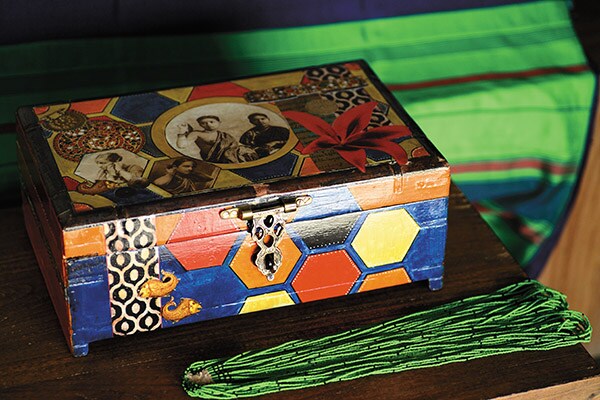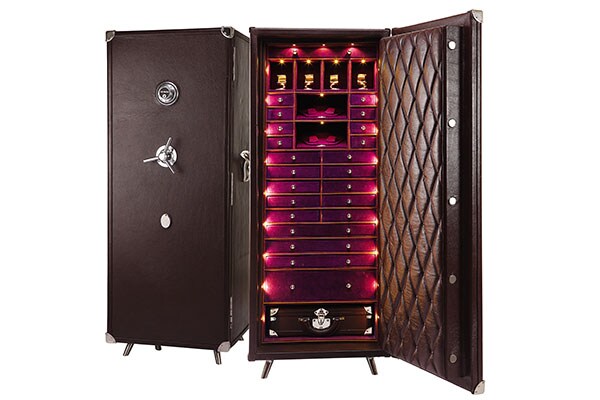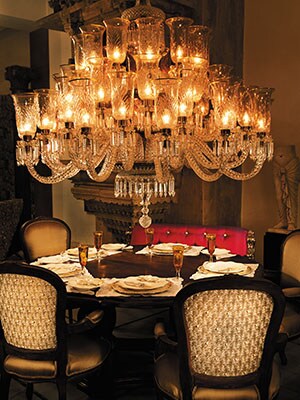
House of memories: The resurgence of vintage and antique décor
Vintage home décor is as much about the reassurance of familiar forms and texture, as it is about stories of bygone eras
If you have been contemplating a redecoration of your home or, perhaps, setting up a new one, chances are you have found yourself considering vintage décor. There seems to be a resurgence of vintage and antique décor, be it in the number of high-end stores ready to help you usher in a slice of tradition into your living room, or in the variety of fashionably distressed furniture displayed in magazines and catalogues.
Even though urban tastes prefer modern straight lines, there will be that one signature, standalone furniture piece that will be of vintage origin, and it becomes the focal point in the living space. Others could be more eclectic: They will have everything together, like a vintage piece, a colonial piece, or a contemporary sofa.
But a love of all things old is hardly new. Although, now, it just might be easier to indulge it. And making this possible are designers who are as selective about their clients, as the clients are of their taste.
Designers are manipulating images onto different surfaces, making them more available and more visible; their stores are spaces where the discerning audience—who value provenance, history, heritage, aesthetics and soulfulness above all—is exposed to fine craftsmanship of yore and unique experiences.
Rahul Singh’s House of Heirloom, for instance, is a by-appointment-only 3,000 sq ft “curatorial space” in Delhi’s Friend’s Colony. Singh, creative director, aims to provide a unique experience to all who walk in and hopes to be instrumental in reshaping the sensibility of the Indian buyer. The space houses a mix of antiquity—the stone facades from 80-90 years ago, the 90-year-old Burma teak bed from Bengal—and revival pieces, like chandeliers inspired by Hyderabad’s Chowmahalla Palace or linen with embroidery after the work of Irish nuns.

Memory boxes created by designer Chandan Dubey
The idea is not to go kitsch. The idea is not to go modern. The idea is to stay with the spirit of the craftsmanship that exists in the country and get people to enjoy its splendour.
“Anybody walking into the store, who is willing to spend the time, regardless of whether they buy anything or not, is coming to soak in an experience and to learn something new,” says Singh. “The larger part of the story is there is an awareness that grows. There are people who you would not typically imagine to be a customer for a brand like this, but who, all of a sudden, re-look and re-see what they are being shown and they realise the value of what’s being made.”
But vintage décor need not always translate into an outpouring of opulence as in the House of Heirloom. The flagship store of the Great Eastern Home, set within the precincts of an old textile mill in Byculla, Mumbai, has the sweet smell of old furniture—the kind you find in a library of old, archival books—peeling wall plaster, and the comforting sound of old-fashioned ceiling fans whirring in unison. High ceilings, aged wooden beams, cast iron columns and exposed brick- and rough-hewn stone walls have been restored with minimal intervention, and provide the perfect setting for an eclectic mix of old-world treasures: A French chaise in mahogany and an exquisitely carved Burmese colonial four-poster bed are just two such fine samplings from their rich collection of Art Nouveau, Art Deco, Baroque and Colonial style furniture.
“There is a certain timelessness associated with using classical elements in the confines of your home. We are comfortable with using the weathered or distressed look as we have all grown up with collectibles that have aged over a period of time,” says Kaushik Mukherjee of Kaushik Mukherjee Architects in Bangalore. “However, the use of Indian arts and crafts can be intimidating. If the house looks like a museum there is this nagging fear of knocking over something that may be worth lakhs of rupees.”
But a fondness of things from a bygone era may tap into sentiments deeper than aesthetics. “Why I do vintage is definitely rooted in who I am; somebody who grew up in a certain kind of value system and environment, and holds certain things dear,” says Chandan Dubey, an independent designer and photographer. “Almost all of us have grown up in homes with heirloom or old furniture, collectibles or things you would not part with for one reason or another, and most of the times those reasons are emotional. Those who tend to set up newer homes kind of take that aesthetic forward because it is something they strongly identify with.”
Dubey creates “memory boxes”, where she tries to fabricate elements borrowed from memory and nostalgia onto trunks and boxes, embellishing them with vintage motifs: Photography, old letters, maps, coins, books, jewellery, and small collectibles. This way, she renews the life of the object and makes the image available and relevant for a different time.
She says, “I have always been fascinated by the idea of Wunderkammer or the cabinet of curiosities, which is the idea of collecting, the idea of owning completely disjointed, dismembered objects. Why would you keep a gramophone in your house? It has nothing to do with your current reality but there is an inexplicable connection with it. So this idea of collecting oddities, the idea of being a hoarder, fascinates me a lot. It is not about holding on to the past for the sake of pure nostalgia. It’s about holding on to a story which is inherently a part of you, which might have been useful at some point of time, but you are not willing to let go because you know you will use it at some point of time again.”
By conditioning we want to hold on to shapes and textures that give us comfort, like old books, manuscripts and textiles that are tactile and infused with memories. It might be a saree that your grandmother has worn or it may be a fabric that a craftsperson has woven in a remote village of Madhya Pradesh, but it gives you a sense of familiarity, of reassurance.
This familiarity, for instance, finds reflection in the old traditional motifs that Vikram Goyal reinvents for his luxury bespoke design studio, Viya. He has been producing exquisite high-end handcrafted products for indoors and outdoors for the past 12 years, and is now reaching a wider customer base in Europe and the Middle East.
Experiencing the past through painstakingly recreated or refurbished pieces, however, is not just about comforting memories and reassurances, but also a hark back to the days of decadent luxury.
The Trunks Company, Jaipur capitalised on the concept of exclusivity and a growing appreciation of heritage trunks among those who place as much significance on the romance of the journey as on the destination; hence the reinvention and redesigning of travelling trunks as a high-end luxury product. What used to be a luxury accessory of choice when the European elite and Indian maharajas embarked on leisurely cruises a century ago is once again being seen in the living spaces of those who love history and regal splendour.

Safe deposit: The reimagined heritage trunk from the Trunks Company, Jaipur
The trunks, priced upwards of Rs 1 lakh, are not built to carry clothes and accessories (although the company is working on ways to adapt them for travel), and have, instead, been reimagined to suit contemporary requirements and quirks. The Company offers trunks for specific purposes, such as for watches, music systems, and bar accessories.
Recreating past splendour in modern moulds is something that Alex Davis, a Delhi-based artist and designer for the past 20 years, has done with his recent collection ‘Once Upon a Time’. It is an updated edition of the old world, a world of forts and palaces; he has reinterpreted and stylised it in steel and brass.
Viya’s Goyal says his approach and style resonates well with the well-heeled, well-travelled buyer. It is an aesthetic that appeals to a certain design sensibililty.
In India, having bespoke clothing, accessories and services is not something that has traditionally belonged to the elite alone. “Bespoke workmanship and customised orders for clients was very much part of our cultural heritage. It was not just the royalty and nobility who had the benefit of courtesans, poets and artists; everybody had that family tailor who would custom-make clothes for your body, your shape and your contour,” says Singh, of House of Heirloom. “What has happened is, unfortunately, the market has moved into a mass manufacture model, and skills by hand are now lost.”
Consequently, it took him a fair amount of time to trace craftsmen and bring them back into form. An experience shared by the Great Eastern Home: their recreations of antique furniture, for instance, require highly skilled craftsmen. So much so, that it is near impossible to tell the difference between a piece that was created by master craftsmen decades ago, and one that has been created over the past few months. The credit, of course, lies entirely with the craftsmen who can produce what most people think cannot be made in India anymore. The approach may be contemporary, but the soul remains ancient.
(This story appears in the Sept-Oct 2014 issue of ForbesLife India. To visit our Archives, click here.)






